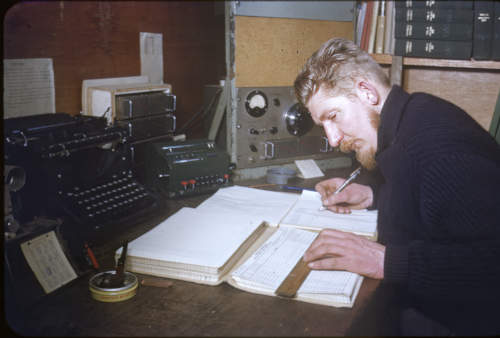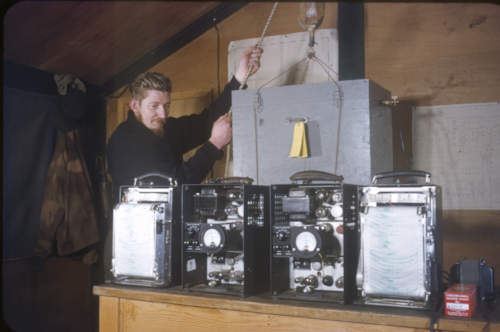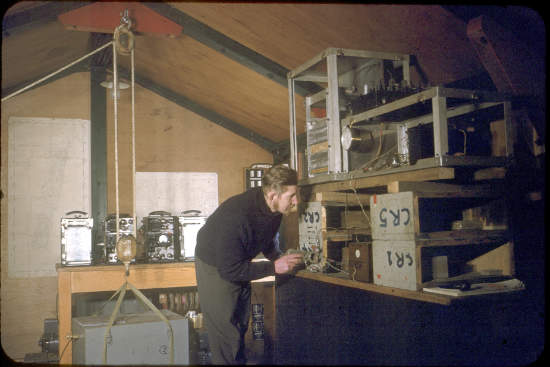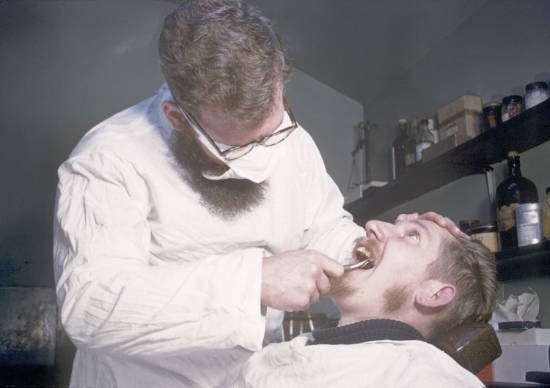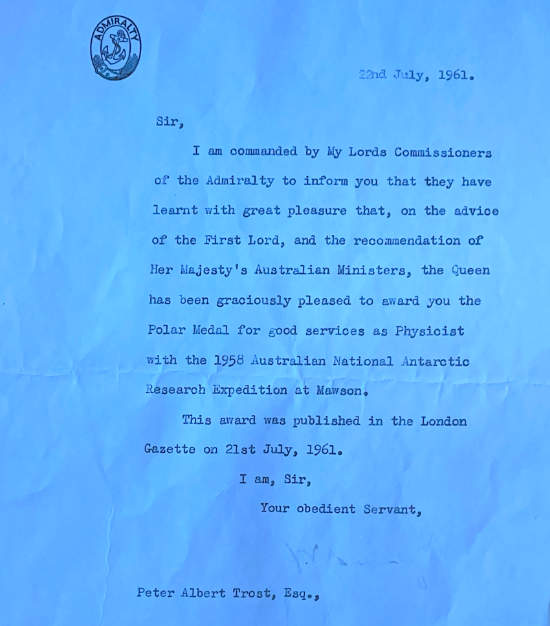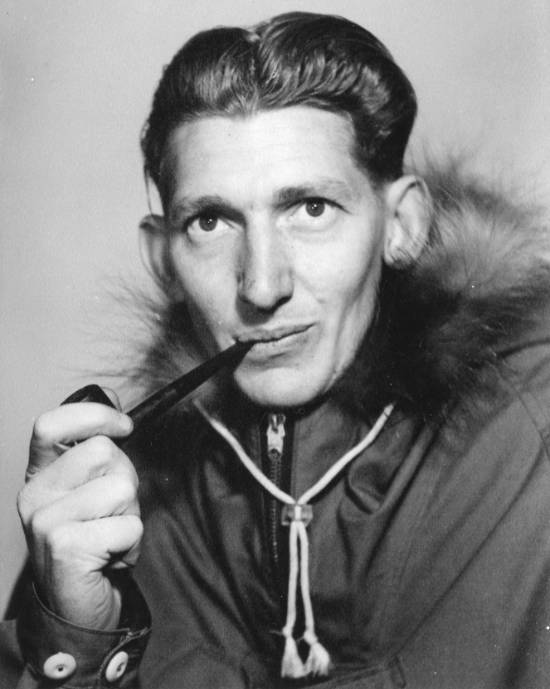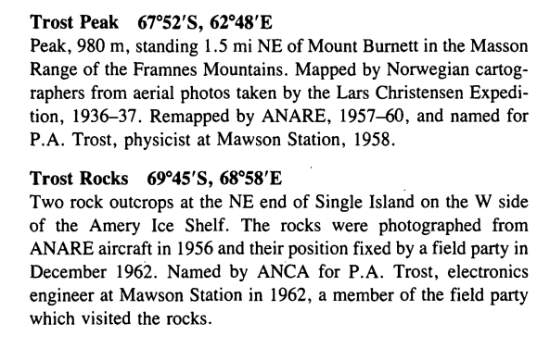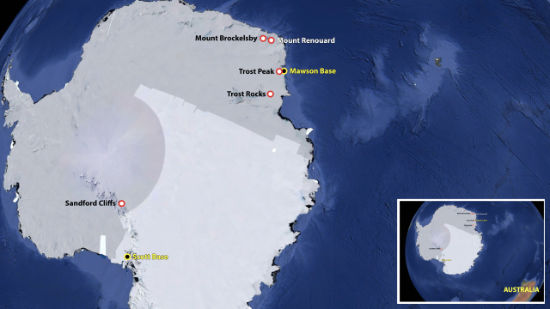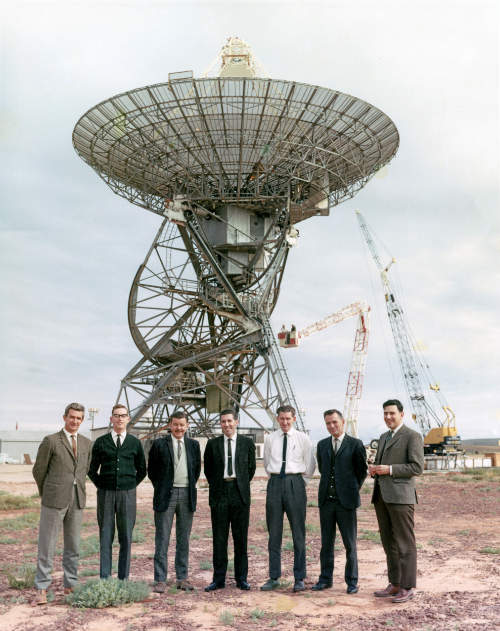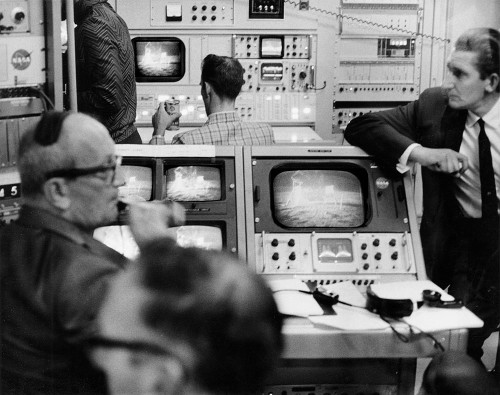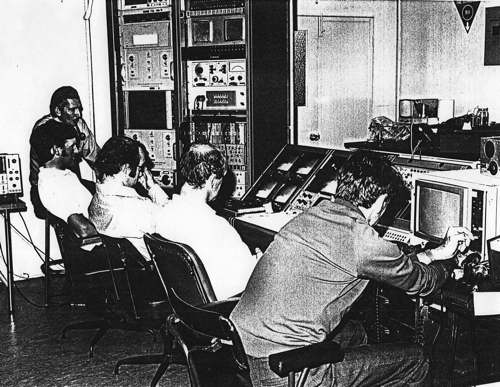Peter Trost
1925 – 2009
DSS41 Woomera and American Projects Branch
Born in 1925, Peter Trost grew up in Ferntree Gully in the far outer suburbs of Melbourne. He studied electronics and radio in the Royal Australian Air Force.
Years before his career in space tracking, Peter served three terms in the Antarctic with the Australian National Antarctic Research Expedition (ANARE).
He was a cosmic ray physicist at Australia’s research bases on Macquarie Island in 1956 and at Mawson Base on the Antarctic continent in 1958.
Peter Trost at Macquarie Island tabulating cosmic ray observations in 1956. Peter’s Macquarie Island transparency scans with thanks to his daughter Dalice. Image cleanup by Colin Mackellar. |
Peter Trost in the cosmic ray laboratory at Macquarie Island in 1956. |
Peter Trost with some of his equipment in the cosmic ray laboratory at Macquarie Island in 1956. Note the map of Macquarie Island on the wall at left. |
Dental procedures on Macquarie Island look like a lot of fun! |
This 1961 letter from The Admiralty brought news of the award of The Polar Medal. |
Peter returned to Mawson in 1962 where he served as an auroral physicist and was second-in-charge of the station.
Peter Trost, dressed for Antarctic conditions. |
Two geographical features in Antarctica are named for Peter Trost – Trost Peak and Trost Rocks. Peter was in the party which sighted Trost Rocks from the Amery Ice Shelf in 1962. He visited the feature, 90 metres above the ice shelf and assisted in the astrofix.
Dave Carstens wrote in the Aurora Journal, December 2009, of the ANARE Club,
“Peter considered it a high point of the 1962 year, that he was able to take part in the field trip to pioneer the route to the Amery Ice Shelf. As the auroral physicist, his observation work was completed as summer daylight hours advanced and thus freed him for the traverse work where his contribution was invaluable.”
Trost Peak and Trost Rocks entries from Geographic Names of the Antarctic, Names Approved by the United States Board on Geographic Names, compiled and edited by Fred G. Alberts. Second Edition 1995. Available online from The U.S. Geological Survey. 116MB PDF file. |
Trost Peak and Trost Rocks, along with other geographic features named for other men who later became space trackers. |
In addition, Peter also named Dallice Peak, at 1190 metres the highest peak of the Central Masson Range inland from Mawson. He named it for his daughter Dalice, who was born while he was at Mawson in 1958.
According to the Australian Antarctic Data Centre, “The minutes of the [Australian Antarctic Division?] meeting of July 1959 incorrectly spelt her name as Dallice. This wasn’t picked up until May 2018. The name appears on many maps and has been adopted by other countries, so it couldn’t be corrected.”
He returned from Antarctica in 1963, and in early 1966, Peter joined the team at DSS41 Island Lagoon as Experimental Officer 3, Section Leader, Operations, working alongside Station Director Don Cocks, and was at the station for key missions including the Lunar Orbiters.
In this late 1968 photo of senior staff at DSS41 Island Lagoon, Peter Trost is third from right, wearing the white shirt. Photo with thanks to Don Cocks, via John Heath. |
He left Island Lagoon in late 1968 to become the NASCOM Communications Engineer with the Department of Supply’s American Projects Branch. Reporting to Basil Monkton who ran the Network Support Facility (Australia), he was responsible for the Australian sector (with its main switching centre at Deakin) of NASCOM – NASA’s worldwide communications network.
Peter was present to monitor operations at Sydney Video in the OTC building at Paddington in Sydney during the Apollo 11 EVA broadcast in July 1969, and also during the later missions when Sydney Video was moved to City South Exchange in Sydney for Apollo 13 and onwards.
Peter Trost, at right, observes the activities in Sydney Video at the end of the Apollo 11 EVA on 21st July 1969. Though the astronauts are back inside the Lunar Module, the television camera is still sending pictures. NASA photo G-70-1464. Thanks to Dick Nafzger at the Goddard Space Flight Center. Scan: Bill Wood. |
Sydney Video at City South Telephone Exchange, 219 Castlereagh Street during Apollo 17. This photocopy of a photograph shows the team at Sydney Video in December 1972, in the Television Operations Centre in the City South Exchange. Left to right: Peter Trost, John Murray, Pat Lynch, Ralph Zimitat, Dick Reader. Photo via Mike Dinn. Scan by Colin Mackellar. |
After leaving the Department of Supply, Peter worked in the Defence Department, as Director for radio frequency allocation for international communications. Mike Dinn recalls that work included Peter being the liaison with U.S. communication facilities in Australia.
On his retirement, Peter and his wife Sue built a retirement house at Mooloolaba on the Sunshine Coast in Queensland, and enjoying sailing their steel yacht, “Yikla”. This was followed by moves to Gladstone and then to Coffs Harbour.
In all this time, Peter and Sue travelled to ANARE reunions for each of the 1956, 1958 and 1962 Antarctic parties.
Peter is remembered by his family, friends and colleagues as a gentleman, as an Antarctic researcher, deep space researcher, and as a key link in the communications chain for the Apollo missions to the Moon.
––––––
Grateful thanks go to Dalice Trost for her photos and help, to Ian Romanes for scanning the slides, and to David Carstens for Peter’s Obituary which he wrote for the Aurora Journal December 2009.
